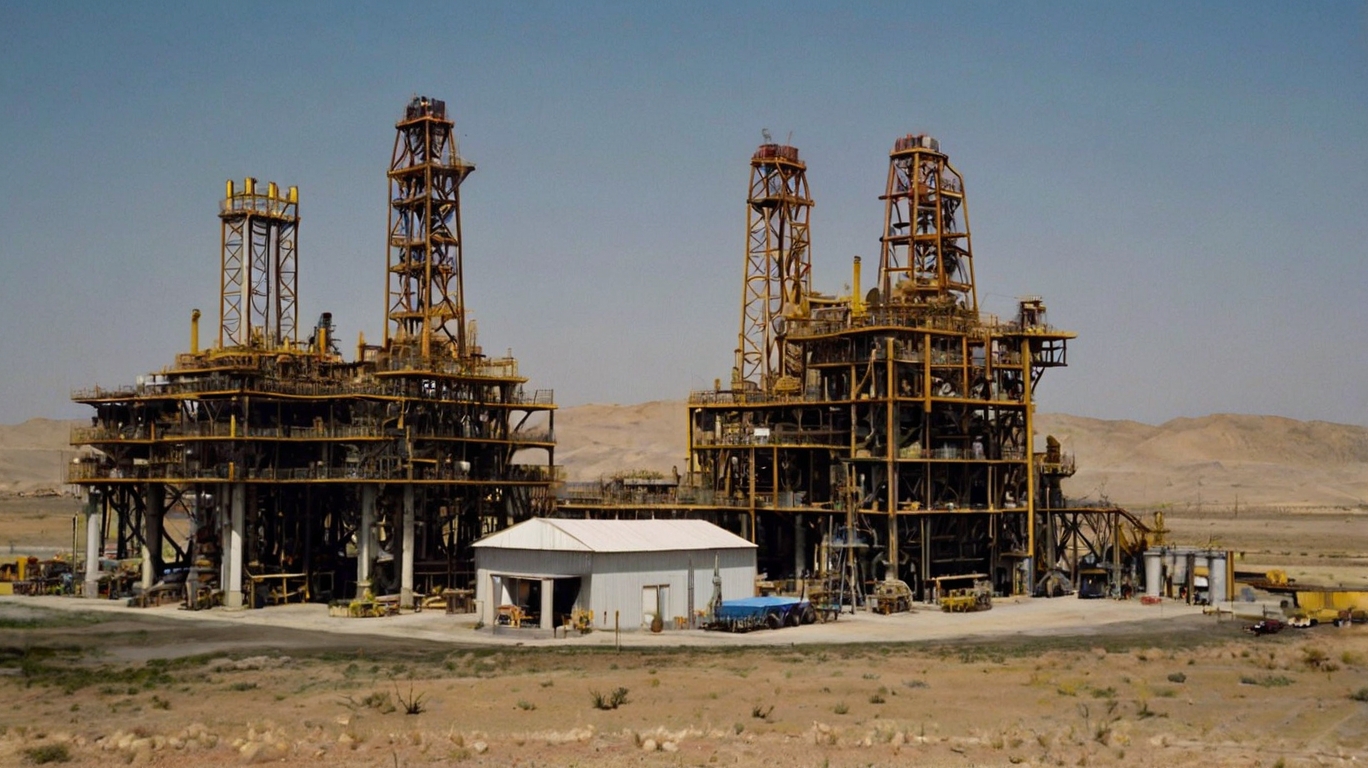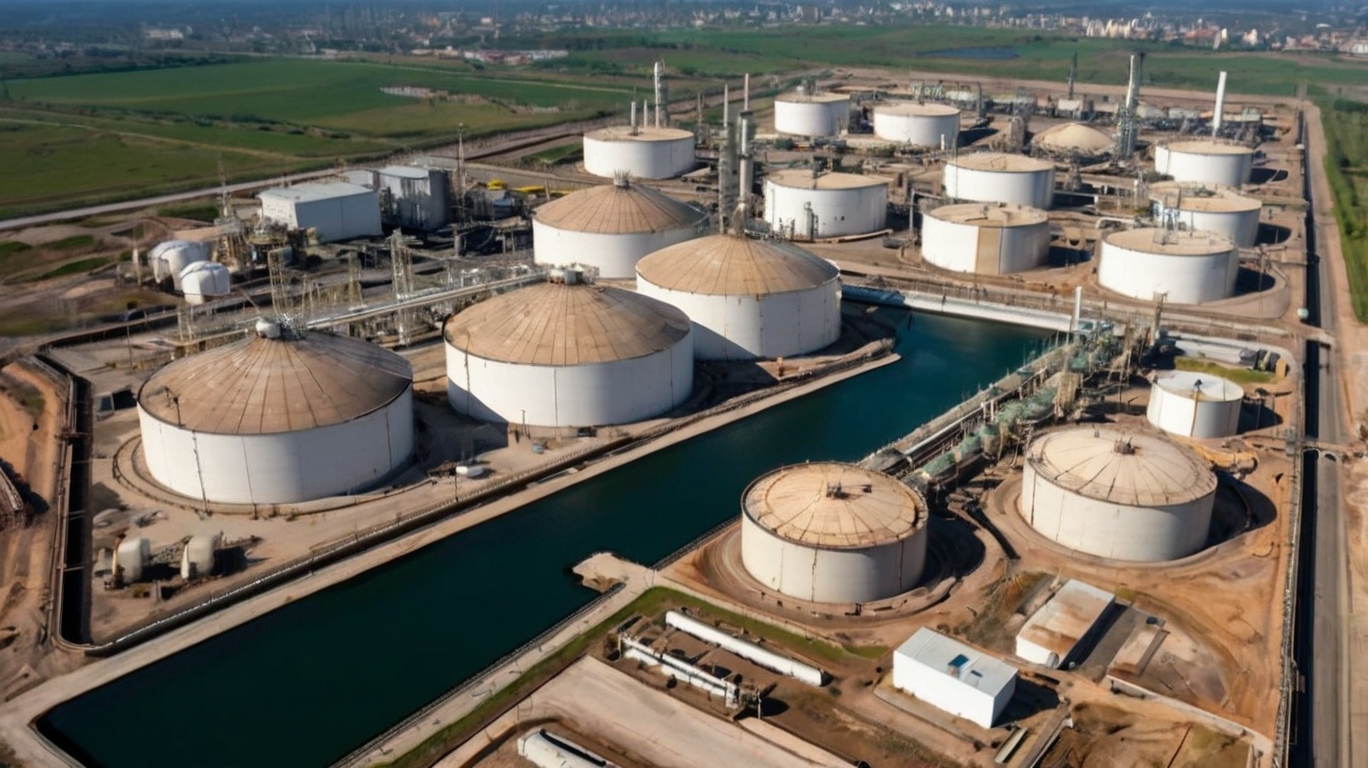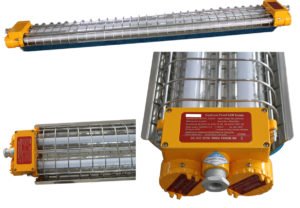Class 2 Division 1 Fixed Lighting
Explore our premium selection of Class 2 Division 1 fixed lighting, engineered to ensure safety and reliability in hazardous environments. These lighting solutions are ideal for areas with combustible dust, such as metal, wood, or plastic dust, commonly found in industries like oil and gas, pharmaceuticals, and grain processing.
Show moreOur lighting fixtures are sourced from top manufacturers and adhere to the strictest safety standards, ensuring they can withstand extreme conditions while providing consistent, high-quality illumination. Enhance workplace safety, reduce risks, and ensure compliance with our robust and durable lighting solutions designed for the most challenging industrial environments.
Showing all 2 resultsSorted by popularity
-

CRESSA CS-EXHB86-SM Led Explosion Proof Light
$57780Price Depends on product option Make a selection to update priceImport tariffs charged -
%22%20transform%3D%22translate(.6%20.6)%20scale(1.17188)%22%20fill-opacity%3D%22.5%22%3E%3Cellipse%20fill%3D%22%23a5560f%22%20rx%3D%221%22%20ry%3D%221%22%20transform%3D%22matrix(-11.9279%20-55.6387%2049.74528%20-10.66446%20178.4%20121.2)%22%2F%3E%3Cellipse%20fill%3D%22%23f8ffff%22%20rx%3D%221%22%20ry%3D%221%22%20transform%3D%22matrix(75.90778%20-10.3106%208.97416%2066.06881%2041%2040.8)%22%2F%3E%3Cellipse%20fill%3D%22%23e2ebf5%22%20cx%3D%2234%22%20cy%3D%22169%22%20rx%3D%2299%22%20ry%3D%2221%22%2F%3E%3Cellipse%20fill%3D%22%237b8795%22%20rx%3D%221%22%20ry%3D%221%22%20transform%3D%22matrix(3.42439%2028.01798%20-48.55798%205.93481%20170.3%2060.4)%22%2F%3E%3C%2Fg%3E%3C%2Fsvg%3E)
AE Light Explosion Proof LED Industrial Light – 40W (2-20W Tubes)
$68862
- Prioritize Safety with Specialized Lighting: Discover how Class 2 Division 1 fixed lighting provides essential visibility in hazardous environments without risking ignition.
- Robust and Reliable Design: Learn about the highly durable construction and stringent safety standards that Class 2 Division 1 fixtures must meet to ensure workplace safety.
- Advantages of LED Technology: Explore the benefits of energy efficiency, longevity, and enhanced safety that LED technology offers in Class 2 Division 1 lighting applications.
Understanding Class 2 Division 1 Fixed Lighting
Class 2 Division 1 fixed lighting refers to a lighting classification within the electrical code for hazardous locations. This specific type of lighting is designed to be installed in areas where combustible dust is present and could pose an explosive or fire risk. These conditions necessitate robust lighting solutions that can operate safely without igniting the flammable material in the environment.
Class 2
This classification indicates that the area contains combustible dust. Such dust includes fine particles that can become airborne and potentially ignite, such as metal dust, wood dust, or plastic dust.
Division 1
This identifies areas where the hazardous material – in this case, dust – is present during regular operations. It could be in the course of normal operation, during frequent maintenance, or due to equipment failure, thus necessitating a permanent solution that ensures the safety at all times.
The design of Class 2 Division 1 fixed lighting units is highly specialized. These fixtures must be able to contain an explosion within their housing and prevent it from igniting the surrounding atmosphere. This requires rugged constructions, with heavy-duty, non-corrosive materials and sealed components to mitigate the risk of dust infiltration that could potentially combust.
Lighting in hazardous locations must also meet the stringent requirements of safety standards set by authorities such as the National Electric Code (NEC) in the United States, which stipulates the guidelines for installation and maintenance of electrical equipment in hazardous locations.
By utilizing Class 2 Division 1 fixed lighting, facilities in the oil and gas industry can ensure that not only is lighting delivered efficiently, but it is done so without compromising the safety of the equipment or personnel. The appropriate installation and maintenance of these lighting systems are crucial and should only be carried out by professionals with appropriate training and experience in hazardous locations.
At The Intrinsically Safe Store, we understand the importance of meeting these rigorous standards. Our Class 2 Division 1 fixed lighting solutions are designed to ensure maximum safety and reliability, following our rigorous commitment to providing high-quality and compliant options for the oil and gas sector. By offering a comprehensive range of Class 2 Division 1 fixed lighting, we help mitigate risks and ensure the smooth operation of facilities situated in hazardous dust environments.
Design Features of Class 2 Division 1 Lighting Fixtures
Class 2 Division 1 fixed lighting plays an instrumental role in maintaining safety standards within hazardous locations. These lighting fixtures are expertly crafted to withstand the challenging conditions encountered in environments prone to explosive dust atmospheres — conditions that are common within sectors of the oil and gas industry. A close examination of the design features that characterize these robust lighting solutions reveals the uncompromising commitment to safety and functionality.
Durability: The construction of Class 2 Division 1 lighting fixtures is a masterclass in durability. Typically built with heavy-duty materials such as die-cast aluminum and stainless steel, these fixtures are designed to resist corrosion, vibration, and impact. This ensures their longevity, even in the most extreme industrial environments where they may face exposure to harsh chemicals and fluctuating temperatures.
Encapsulation and Sealing: These lighting fixtures are encapsulated and sealed to prevent the ignition of combustible dust in the atmosphere. The seals are often made from high-grade materials ensuring that no hazardous elements seep into the fixture, which could otherwise compromise safety and functionality.
Temperature Control: Temperature regulation is a critical element in the design of these lighting fixtures. They are meticulously engineered to operate safely below the ignition temperature of specific hazardous materials present in the environment. The fixtures are equipped with components that minimize the generation of heat, and they may also incorporate heat dissipating materials or designs that passively cool the units.
LED Technology: Integrating LED technology into Class 2 Division 1 lighting fixtures offers several benefits. LEDs consume less power, require less maintenance, and have a significantly longer lifespan compared to traditional lighting solutions. Moreover, LEDs provide brighter, more focused lighting, which is paramount for maintaining visibility and therefore, safety in hazardous areas.
Ease of Installation and Maintenance: Despite their robust and intricate design, these fixtures are developed to ensure ease of installation and maintenance. Manufacturers consider the accessibility of the mounting and wiring components without compromising the fixture’s integrity and compliance with safety regulations.
Certification and Compliance: Every Class 2 Division 1 lighting fixture adheres to stringent industry standards and certifications. Compliance with organizations like UL (Underwriters Laboratories), CSA (Canadian Standards Association), and other relevant bodies is non-negotiable. These certifications affirm that the fixtures meet the required safety criteria for operation in designated hazardous locations.

In conclusion, the design features of Class 2 Division 1 lighting fixtures exhibit a deliberate integration of safety, performance, and reliability. These essential aspects coalesce to make these fixtures the linchpin of safe illumination in hazardous areas. They are ingeniously constructed not just to withstand the rigors of challenging environments but also to provide consistent, reliable lighting that upholds the safety and efficiency standards that the Intrinsically Safe Store assures its clients in the oil and gas industry.
Benefits of LED Technology in Class 2 Division 1 Fixtures
When it comes to Class 2 Division 1 fixed lighting, LED technology has brought about a significant transformation in safety and efficiency for hazardous locations within the oil and gas industry. Its integration into lighting solutions designed for such perilous environments offers multiple benefits that render it an ideal choice for industry professionals.
The principal advantages of using LED technology in Class 2 Division 1 fixtures include:
- Enhanced Safety: LEDs inherently run cooler than traditional lighting solutions, such as incandescent or HID lamps, reducing the likelihood of overheating and the potential for igniting flammable materials present in the atmosphere of Class 2 Division 1 areas.
- Energy Efficiency: LEDs are known for their low power consumption, which translates to reduced operational costs over time. This energy efficiency can lead to significant savings, an important consideration for any operation in the oil and gas industry.
- Longevity and Durability: With a lifespan that often exceeds 50,000 hours, LED lights require less frequent replacement compared to other lighting technologies. This long service life coupled with their shock resistance makes LED fixtures a reliable choice for the demanding conditions typical of hazardous locations.
- Improved Visibility: LED lights produce a high-quality, bright white light that greatly improves visibility. This is especially critical in hazardous settings where precise visual clarity can prevent accidents and enhance productivity.
- Low Maintenance: The durability and extended life span of LEDs also mean fewer maintenance demands. In environments where maintenance can be both difficult and dangerous, the less frequent need to service lighting fixtures is a considerable advantage.
- Environmentally Friendly: LEDs do not contain mercury, unlike fluorescent lights, and are 100% recyclable, which aligns with an increasing industry shift towards environmentally sustainable operations.
Given these substantial benefits, LED technology in Class 2 Division 1 fixed lighting not only fulfills the stringent safety requirements of the oil and gas sector but also contributes to the overall operational efficiency for businesses aiming to mitigate risks and enhance performance in hazardous locations.
Legal Compliance and Industry Regulations
Ensuring legal compliance and adhering to industry regulations is a critical aspect that cannot be overlooked when it comes to the installation of Class 2 Division 1 fixed lighting in hazardous locations. Meeting these strict standards is fundamental to maintaining a safe working environment and preventing catastrophic incidents.
In the realm of hazardous area lighting, the classification system is based on the National Electric Code (NEC), specifically under the NEC Article 500. This classification divides hazardous locations into Classes, Divisions, and Groups based on the nature of the hazardous material present, its risks, and the required protection levels.
Class 2 Division 1 refers to environments where combustible dust is present under normal operating conditions and has the potential to explode or ignite. The presence of such hazardous materials necessitates lighting fixtures that are specially designed and certified to be intrinsically safe and explosion-proof.
Further amplifying these requirements, the Occupational Safety and Health Administration (OSHA) stipulates that electrical equipment used in these environments must be “approved for the hazard”, according to OSHA regulation 1910.307(a). Approval must be granted by a Nationally Recognized Testing Laboratory (NRTL), such as Underwriters Laboratories (UL) or Factory Mutual (FM), which sets forth stringent criteria for lighting fixtures to be used in these hazardous settings.
In addition to national standards, industry-specific regulations may also apply, such as those set by the American Petroleum Institute (API) for the oil and gas sector. These guidelines are designed to complement federal regulations and respond to the unique challenges faced in the extraction, processing, and handling of flammable substances.
 Oil and gas industry professionals must choose Class 2 Division 1 fixed lighting solutions that not only offer the highest safety integrity but also comply with all applicable standards and regulations. By doing so, businesses can ensure the well-being of their employees, the protection of their facilities, and the uninterrupted continuity of their operations.
Oil and gas industry professionals must choose Class 2 Division 1 fixed lighting solutions that not only offer the highest safety integrity but also comply with all applicable standards and regulations. By doing so, businesses can ensure the well-being of their employees, the protection of their facilities, and the uninterrupted continuity of their operations.
Moreover, companies like The Intrinsically Safe Store, with a dedicated focus on providing certified and compliant lighting solutions for hazardous areas, play a crucial role in maintaining industry integrity. By partnering with such specialized providers, companies in the oil and gas industry can confidently achieve legal compliance and uphold the highest safety measures.
Safety Standards and Certifications Explained
Ensuring the safety and compliance of lighting in hazardous locations is critical. Class 2 Division 1 fixed lighting is specialized equipment designed for use in areas where ignitable concentrations of combustible dust are present under normal operation conditions. These environments necessitate lighting fixtures that meet strict safety standards and certifications to prevent any risk of explosion or fire.
Safety standards and certifications for Class 2 Division 1 fixed lighting are primarily governed by the National Electric Code (NEC) in the U.S., which is part of the National Fire Protection Association (NFPA) 70 standards. Under these regulations, lighting fixtures must be designed to contain an explosion within the fixture or prevent sparks from igniting gases, dust, fibers, or flyings in the surrounding atmosphere.
The Class 2 Division 1 signifies the hazardous environment category for which the lighting is suited. ‘Class 2’ refers to locations where combustible dust rather than gases or liquids are the primary concern. ‘Division 1’ indicates that the ignitable concentrations of dust particles are present during regular operating conditions.
Additionally, these lighting fixtures often carry certifications from testing agencies such as Underwriters Laboratories (UL) and Factory Mutual (FM). UL standard 844 is specifically tailored to portable and fixed lighting for hazardous (classified) locations. A UL certification signifies that a product has been tested by UL to nationally recognized safety and sustainability standards and performs according to the manufacturer’s specifications.
Further, lighting products may also comply with international safety standards such as those set by the International Electrotechnical Commission (IEC), particularly the IECEx system for certification to standards relating to equipment for use in explosive atmospheres.
In summary, when selecting Class 2 Division 1 fixed lighting solutions, professionals in the oil and gas industry should prioritize products that not only meet or exceed these robust safety standards but also hold necessary certifications to ensure the highest level of safety and reliability in hazardous working conditions. With the Intrinsically Safe Store’s dedication to supplying only certified and safe solutions, industry professionals can trust that they are adhering to stringent safety requirements while maintaining efficient and secure operations.
FAQs Section
What is Class 2 Division 1 Fixed Lighting?
Class 2 Division 1 fixed lighting refers to lighting fixtures designed for use in hazardous environments where there is a presence of combustible dust. These fixtures are constructed and tested to ensure they will not ignite a layer or cloud of combustible dust in the air. Class 2 Division 1 lighting is a critical component for maintaining workplace safety and is required in areas where the potential for hazardous conditions is high.
What are the criteria for a location to be classified as Class 2 Division 1?
A location is classified as Class 2 Division 1 under the National Electrical Code (NEC) when there is a presence of combustible dust in the environment that could be explosive or ignitable if ignited. This classification takes into account the presence, type, and characteristics of the dust, as well as the likelihood of the dust being present in an ignitable concentration.
What industries commonly use Class 2 Division 1 lighting fixtures?
Industries that commonly use Class 2 Division 1 lighting fixtures are those prone to the presence of combustible dusts, such as grain processing, sugar refineries, metal working facilities, and pharmaceutical manufacturing. Any industry dealing with wood flour, plastics, coal, or chemical dusts may require the use of these specialized lighting fixtures to ensure a safe working environment.
What are the risks of not using proper lighting in these environments?
The risks of not using properly classified lighting in hazardous environments include potential ignition of combustible dust, which could lead to explosions, fires, and serious injury or death to personnel. Additionally, failure to use appropriate lighting can result in significant fines and legal liabilities, along with damage to equipment and loss of production.
Are there different types of Class 2 Division 1 lights for varying conditions?
Yes, there are different types of Class 2 Division 1 lights for varying conditions to address different needs and challenges of hazardous locations. These may include different mounting options, varying degrees of brightness, and protective features against dust, moisture and impact. It is critical to choose the right type of light fixture based on the specific requirements of the hazardous environment.



























